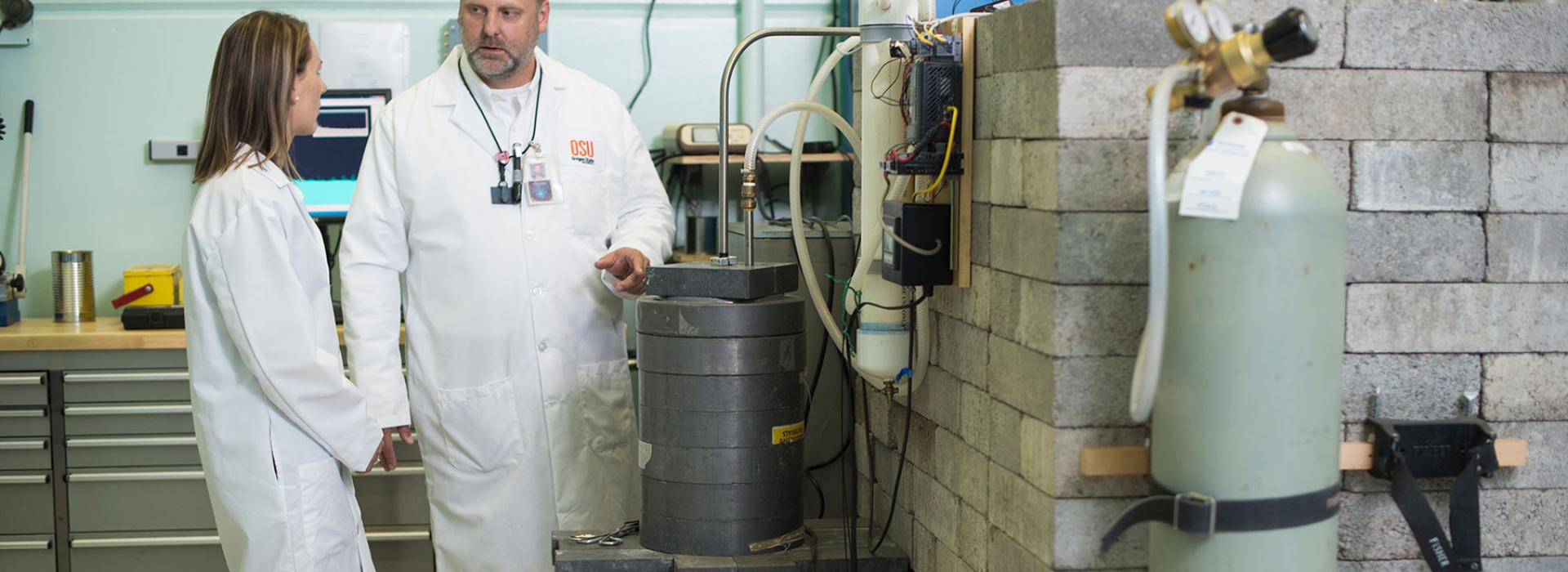The newest faculty member in the College of Engineering’s School of Nuclear Science and Engineering (NSE) has been at Oregon State University for more than 20 years.
Steven R. Reese was promoted to the rank of associate professor with tenure earlier this year. But he has worked at Oregon State in association with the college since 1997, serving as director of the Radiation Center since 2005. Reese says the upgrade to his position and job title came as a pleasant surprise.
“I certainly didn’t expect it,” he said. “But it was an honor to receive this recognition, and I am very pleased to have it.”
A native of Yamhill, Oregon, Reese first came to Oregon State in the late 1980s to study radiological health sciences as an undergraduate, finishing in 1991 with a bachelor of science degree. (“I’m a Beaver from way back,” he says.) He then spent a few years working at Battelle Pacific Northwest National Laboratory, in Richland, Washington, before heading off to graduate school at Colorado State University in 1994.
Reese’s time at Colorado State overlapped with that of one Kathryn Higley, now NSE’s school head, who was finishing up her doctoral program in radiological health sciences right around the time Reese was starting his. Reese and Higley met in graduate school. Higley joined Oregon State as an NSE faculty member in 1994. After Reese had completed his degree, he returned to Oregon in early 1997 and married Higley soon after.
Back at his alma mater, Reese started out in the Radiation Safety Office, where he worked for about a year. In 1998, a reactor administrator position opened up at the Radiation Center. The center houses most of the facilities utilized by NSE, including the 1.1 MW Oregon State TRIGA Reactor. Reese worked in that position until 2005, when he was promoted to director of the facility.
As director of the Radiation Center, Reese’s primary responsibility is to facilitate faculty and student researchers’ use of the facility, providing the necessary infrastructure and shouldering the regulatory burden that comes along with working with radioactive materials.
Part of that responsibility involves teaching and mentoring students. Reese has taught courses in internal dosimetry, radiation protection, physical security, and the fundamentals of nuclear security, among others. He’s mentored a number of undergraduate and graduate students, and he’s already matriculated his first doctoral student.
“All of those things are consistent with what a faculty member does,” Reese said. “So, nothing has really changed for me, as far as my job goes.”
Officially, Reese’s effort is now equally divided between his administrative responsibilities and his teaching and mentoring duties. He’s also engaged in research and commercialization activities. One of his proudest achievements was a collaboration with Todd Palmer, professor of nuclear science and engineering, along with a fellow Radiation Center staff member, Todd Keller, and an undergraduate student, Madicken Munk, which resulted in a patent for a novel target design to facilitate the production of molybdenum-99, a critical medical isotope, and the formation of a company, Northwest Medical Isotopes.
“That was the proverbial feather in the cap, for me, in terms of career accomplishments,” Reese said. “This is something that will touch thousands of people’s lives. That’s very satisfying.”
But his biggest accomplishments have been cumulative. Over the past decade, utilization of the center’s research reactor has essentially doubled, and its operational tempo has increased. Reese is especially proud of the increased involvement of students and faculty researchers, not just from NSE, but from a variety of departments and disciplines across campus.
The facility sees a lot of traffic from the chemistry department. Scholars in archaeology have used the reactor to find trace materials in artifacts, such as pottery shards and arrowheads, to identify their origins and trade histories. Researchers in civil engineering are using the reactor to examine the movement of water through concrete, utilizing neutrons to take pictures of the water.
“This resource is not meant to be just for Nuclear Science and Engineering,” Reese said. “It’s meant to be for everybody. The community of people benefiting from the use of the facility has become much more diverse than it used to be, in every meaning of the word. And that’s a good thing.”
More than anything else, though, Reese says it’s working with NSE students that gives him satisfaction in his job.
“If it were not for the students, none of us would be here,” he said. “It’s the interaction with students that makes everything. Here I get to work with students who are eager. They’re energetic. They’re smart — very smart. There’s a lot of intellectual satisfaction that comes with that. It’s invigorating.”




